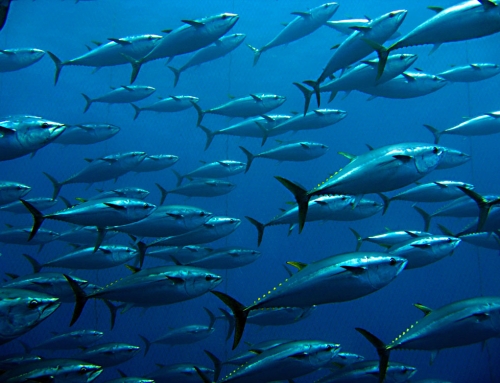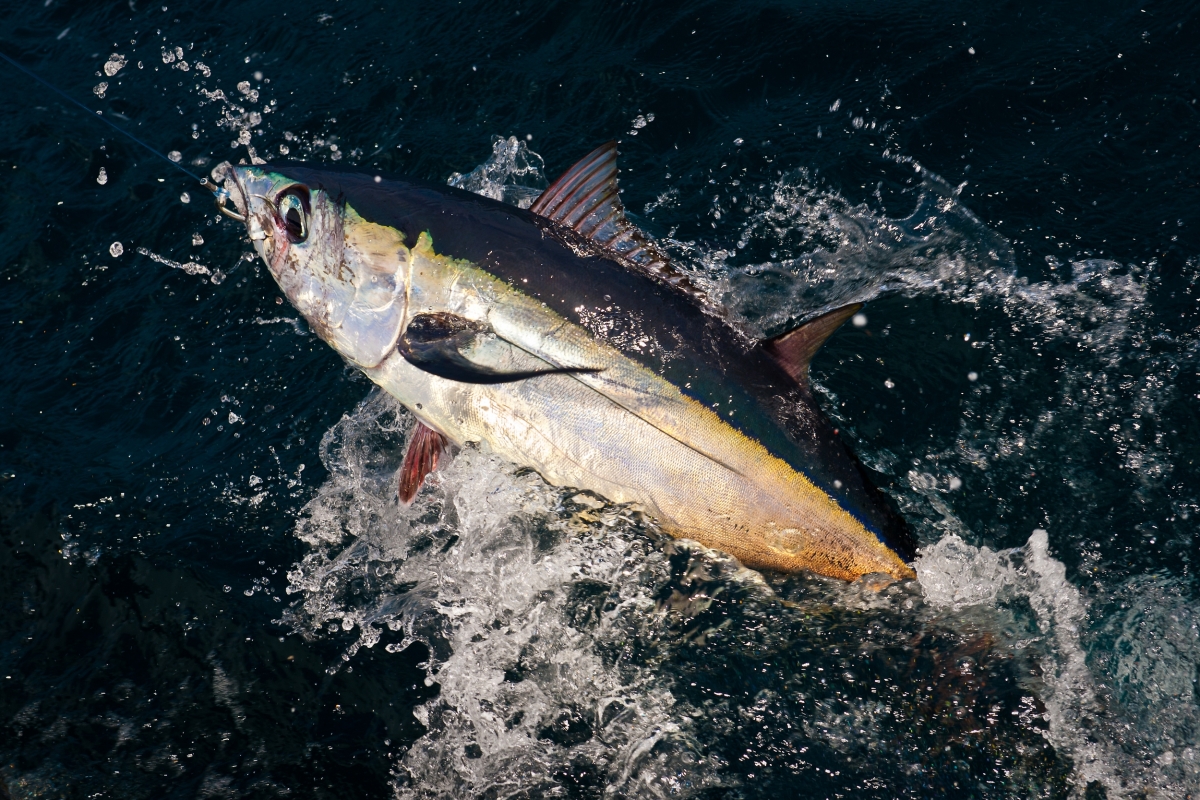SCOMBROID food poisoning is a food-borne illness that results from eating spoiled fish.
While it is quite often miss-diagnosed, because symptoms resemble an allergic reaction, it is most commonly reported with species such as mackerel, bluefish, mahi-mahi, bonito, sardines, anchovies, and tuna.
The issue is really inadequate refrigeration after the fish has been caught. The reason that Tuna is sometimes implicated is that Tuna are not a cold blooded fish- they generate heat by constantly swimming and once a tuna is caught it must be chilled immediately.
We will come back to this further on in our discussion but first, for those that like to know the science…
Scientific Background
Highly Migratory fish, like our Northern Pacific Canadian Albacore Tuna, swim constantly. As a direct result their muscles are constantly being rebuilt from the amino acids that circulate in the blood in the form of the amino acid histadine. Upon the death of the fish bacterial decomposition rapidly converts this histadine to histamine, which is a toxin to mammals and may result in an illness referred to as SCOMBROID poisoning if consumed.
Histamine (or scombroid) poisoning is one of the most significant cause of illness associated with seafood, although frequently mis-diagnosed as “Salmonella spp. infection”. Histamine is formed in spoiling fish by certain bacteria that are able to de-carboxylate the amino acid, histidine. Although some are present in the normal microbial flora of live fish, most of them seem to be derived from post-catching contamination on fishing vessels, at the processing plant or in the distribution system (Lehane and Olley, 2000). The fish are non-toxic when caught, but increase in histamine content as bacterial numbers increase. However, foods containing unusually high levels of histamine may not appear to be outwardly spoiled and cooking does not destroy the histamine (Lehane, 2000).
Improper storage of the fishes, usually at temperatures above 20°C, appears to be the most important predisposing factor. The organisms most commonly involved are Proteus spp., Clostridium spp., Escherichia spp., Salmonella spp., Shigella spp., Morganella morganii, followed by V. parahaemolyticus and V. alginolyticus (Russell and Maretic, 1986; Kim et al., 2001). The optimum temperature for supporting growth of prolific histamine formers was found 25°C, but at 15°C a significant level of histamine was still produced in fish muscle (Kim et al., 2001).
Histamine formation in fish can be prevented by the rapid cooling of fish after catching and adequate refrigeration during handling and storage (Gingerich et al., 1999; Kim et al., 2001).
Scombroid poisoning is geographically diverse and many species have been implicated Foods with histamine concentrations exceeding 50 mg per 100 g of food are generally considered to be hazardous (Taylor et al., 1989). Symptoms of scombroid poisoning include, vomiting, dizziness, rapid pulse, nausea, cramps, diarrhea, swelling, and others. Antihistamines can bring about immediate relief of symptoms with the patient generally recovering within 24 hours.
The Situation in British Columbia – Canada
Scombroid poisoning is not an issue in Canadian fisheries due to the prevalence of cold water and air temperatures, and our rigorous system of handling, regulation and inspection.
Under our own CHMSF PLATIMUM QUALITY ASSUARANCE PROGRAM the protocol for handling (100% of all of our fish) is quite specific:
- Our Canadian Fishing fleet uses only troll fishery using barbless hooks. Each fish is caught individually alive (this is unlike many tropical fisheries where tuna are caught on a longline and could theoretically be dead in the warm tropical waters for sometime before being landed).
- Once chilled the tuna is individually blast frozen, onboard, at temperatures down to -28 C., or colder, and held at that temperature until processed.
- As well, primarily to retain quality by reducing migration of Oils in the fish, but also for safety reasons, our Canadian Albacore Tuna are typically processed into loins while still frozen. This means that tuna from the time it is caught to the time it reaches the restaurant or store, or cannery remains frozen throughout.
Under government regulation, once the fish is received by the Store, or Restaurant- ALBACORE TUNA, once again, remains frozen until final preparation. Even so Canadian Seafood HACCP Regulations require:
- All Fish must be Refrigerated to 4oC (40oF) or cooler at all times.
- All fish that have a temperature of > 4oC (40oF) should be rejected- Review delivery vehicle temperature logs.
- Any fish that has been thawed should be used within 48 hours at refrigerated temperatures.
In Canada between 1975-1981 there were a total of 6 cases of Scombroid Poisoning in the period of those cases one was caused by Cheddar Cheese and the other 5 by fish including AHI TUNA and SMOKED MACKERAL, and MAHI MAHI.
In 2007 one case of Scombroid Poisoning from AHI TUNA was attributed to temperature abuse before cooking in a restaurant environment.
Occasionally, in some non-Canadian ethnic markets a small volume of customers do prefer, and, therefore, purchase fresh albacore tuna from local fishermen. As mentioned above, however, this is not the case in Canada where 100% of commercial tuna is BLAST FROZEN onboard the vessel.
In Canada due to our CHMSF PLATIMUN QUALITY ASSURANCE PROGRAM, strict adherence to provincial and federal HACCP Regulations – In the history of the CANADIAN ALBACORE TUNA fishery there has never been a case of Scombroid (Histamine) Poisoning reported and attributed to Albacore Tuna.
For Further Information Contact the BC Centre for Disease Control: 1-604-707-2400 and ask for the current Seafood Specialist.





